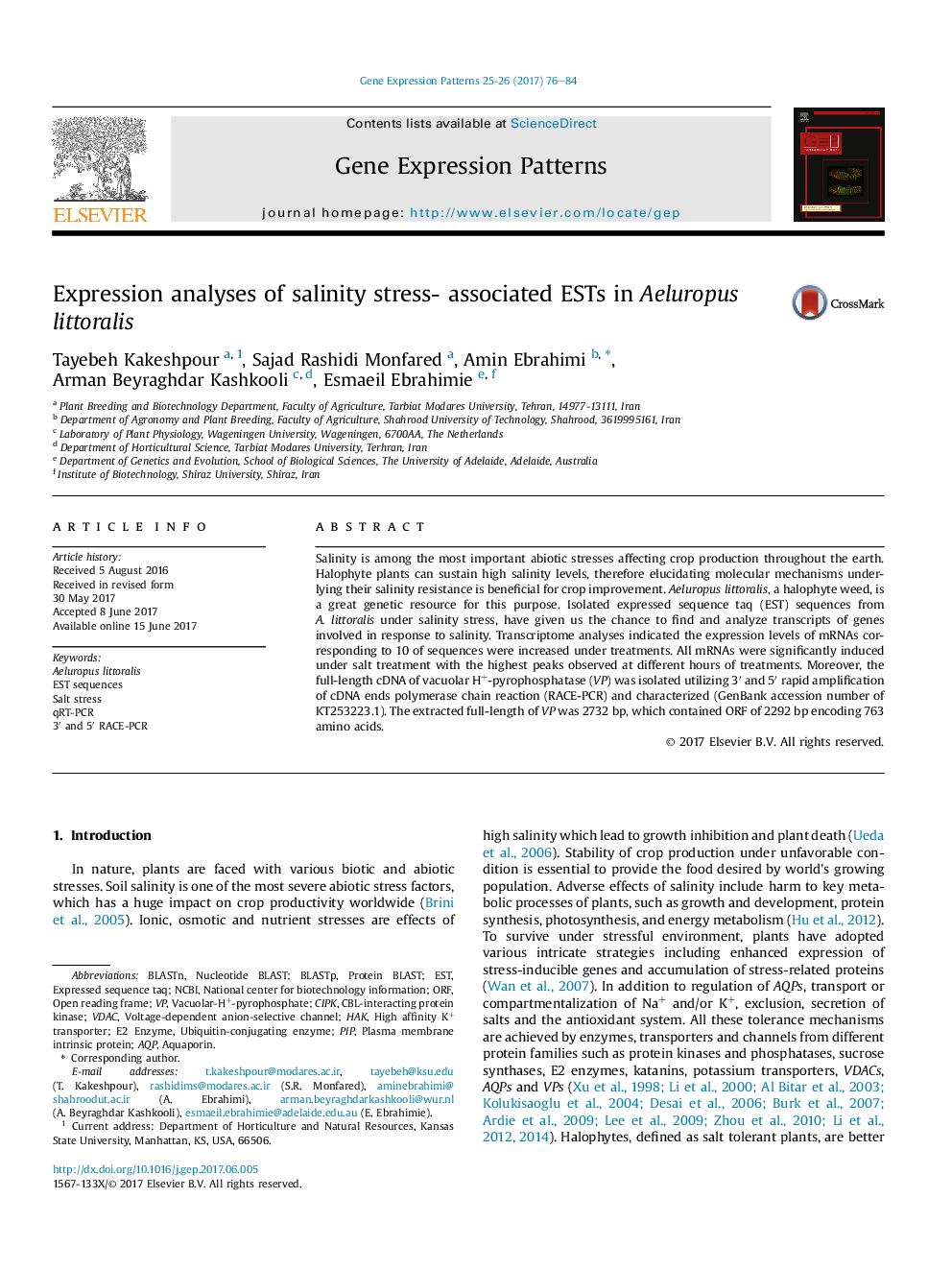| Article ID | Journal | Published Year | Pages | File Type |
|---|---|---|---|---|
| 5532566 | Gene Expression Patterns | 2017 | 9 Pages |
â¢Transcriptome analyses indicated the expression levels of mRNAs corresponding to 10 of sequences were increased under treatments.â¢All mRNAs were significantly induced under salt treatment with the highest peaks observed at different hours of treatments.â¢Among candidate sequences, the VP may be the most important gene in A. littoralis' response to salt stress.â¢The extracted full-length of VP was 2732 bp, which contained ORF of 2292 bp encoding 763 amino acids.
Salinity is among the most important abiotic stresses affecting crop production throughout the earth. Halophyte plants can sustain high salinity levels, therefore elucidating molecular mechanisms underlying their salinity resistance is beneficial for crop improvement. Aeluropus littoralis, a halophyte weed, is a great genetic resource for this purpose. Isolated expressed sequence taq (EST) sequences from A. littoralis under salinity stress, have given us the chance to find and analyze transcripts of genes involved in response to salinity. Transcriptome analyses indicated the expression levels of mRNAs corresponding to 10 of sequences were increased under treatments. All mRNAs were significantly induced under salt treatment with the highest peaks observed at different hours of treatments. Moreover, the full-length cDNA of vacuolar H+-pyrophosphatase (VP) was isolated utilizing 3Ⲡand 5Ⲡrapid amplification of cDNA ends polymerase chain reaction (RACE-PCR) and characterized (GenBank accession number of KT253223.1). The extracted full-length of VP was 2732 bp, which contained ORF of 2292 bp encoding 763 amino acids.
